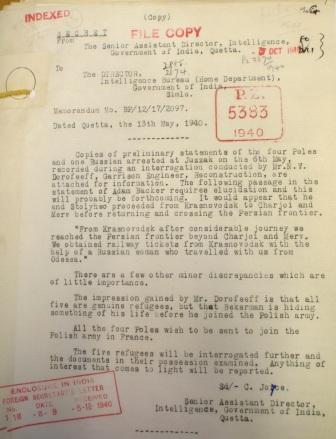Here is a story which could become a blockbuster if put on screen! A
fascinating account of escapes from Soviet Russia during World War II
has lain buried in the files of the India Office Records. Four Poles,
one Ukrainian and a Russian woman give their statements, full of
discrepancies.
 IOR/L/PS/12/380
IOR/L/PS/12/380
Olgierd Stołyhwo and Adam Backer were at school together and fought in the Polish Army after the German invasion in 1939. Taken prisoner, they escaped hoping to join the newly formed Polish Army in France. Their chosen route through Hungary was blocked, so they made their way eastwards. They were
Olgierd Stołyhwo and Adam Backer were at school together and fought in the Polish Army after the German invasion in 1939. Taken prisoner, they escaped hoping to join the newly formed Polish Army in France. Their chosen route through Hungary was blocked, so they made their way eastwards. They were